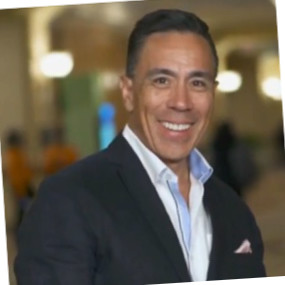Thought Leaders in Internet of Things: Guillermo Diaz, CEO of Kloudspot (Part 1)

Guillermo takes us through IoT use cases in workplace safety in the changing post-Covid world.
Sramana Mitra: Let’s start by introducing our audience to yourself as well Kloudspot.
Guillermo Diaz: I am the CEO of Kloudspot. We call ourselves a situational awareness and intelligence platform that is designed to understand and ingest large amounts of data from IoT sensors. We convert them through our platform into contextualization about people and assets. We provide awareness and predictive actions in an automated fashion. We take action on those predictions to ultimately drive the outcomes of safe and engaging experiences.
Sramana Mitra: Let’s double-click down and do some use cases to understand where your technology is intervening and what kind of impact it is having in those use cases.
Guillermo Diaz: One of the primary things that we are seeing right now is this notion of hybrid work. As folks start coming back to work in offices, it’s going to create some interesting challenges. One of the pivots that we did early on as the pandemic hit was this notion of the hybrid environment.
As an example, we partnered with NEC Japan and America. We developed this hybrid work environment whether you are at home, a satellite office, or in an office. At the beginning of COVID, this was limited to none. Now, as we are starting to get back to a somewhat normal world, the percentage of people coming to the office is going up.
We created the ability to have an immersive experience. If I am at home working, I look like I am in the office. Think about having a 360 view of the floor. When you go to check into an office whether it is physical or virtual, it’s a similar experience. If I am checking in virtually, I would go through the steps of logging into a desk, appearing as if I was there, and collaborate with somebody who is physically in the office.
If I go physically to the office then I go through all the things like checking into that desk, making sure that when I get there it is clean and also going through all the health questionnaires. I am not wasting my time getting there. At the same time, others are still safe when I am there because I have gone through the appropriate measures. This notion of this hybrid immersive work leads to immersive learning and health care. This is something that we are working on.
Sramana Mitra: You need to go further in helping me understand what you are measuring, predicting, how you are processing the data, what data you are collecting, and what heuristics you are applying to predict.
Guillermo Diaz: When people come to a location, I want to be able to know how many people are in the location. In this particular case, we might have a 40% capacity limit. I want to know if I am reaching the capacity limit through analytics and the movement of people when they are on location.
I want to be able to give an invitation and measurement as to when I notify the necessary people that we are reaching our limit. This also includes knowing where people are congregating. There might be too many people in a location. I want to make sure that I am sending alerts and measuring how many people can go in there.
Also, when I am reaching a critical mass, I want to make sure that I take appropriate action. As I am adjusting the data from the movement of people, I am able to contextualize that and start to send out the outcome. I then drive the written analytics in order to take the data from that to make better decisions.
We help answers these types of questions; “How do I configure my office space? When people check into a location, do I allow 40% capacity? As the CDC eases some of the regulations and the capacity percentage goes up, am I prepared for that? How do I take action?”
This segment is part 1 in the series : Thought Leaders in Internet of Things: Guillermo Diaz, CEO of Kloudspot
1 2 3 4 5 6
Featured Videos
Can 1M/1M Help Me Raise Money?
How Does 1M/1M Democratize Entrepreneurship Education?
How Does 1M/1M Democratize Management Consulting?
When Is The Right Time To Join 1M/1M?
Can 1M/1M Help Me With Business Development?
Can 1M/1M Help Me With Market Sizing?
Can 1M/1M Help Me Validate My Product?
Will I Have Private 1-on-1 Sessions In 1M/1M?
How Does 1M/1M Help Entrepreneurs Connect With Silicon Valley?
Mentoring or Consulting?
Why Does 1M/1M Charge $1000 a Year?
Why Does 1M/1M Partner With Local Organizations?
Why Don\’t Mentoring Networks Work?
Why Is It Important To Study With 1M/1M Now?
Dan Stewart Story
Vikrant Mathur Story
